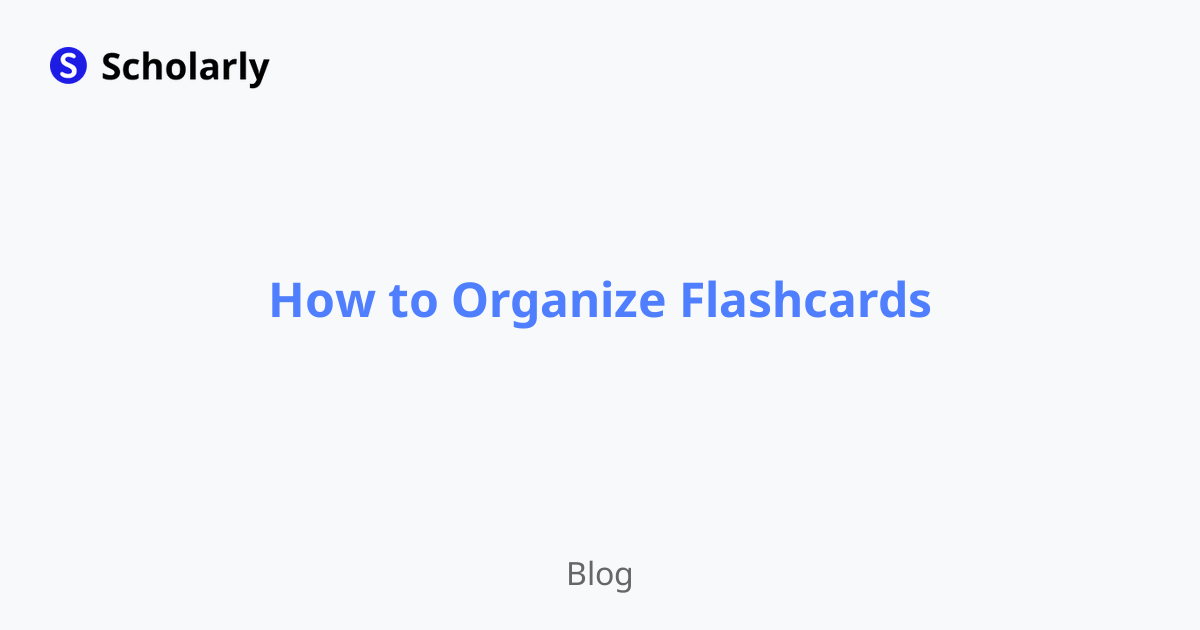How to Organize Flashcards
Learn the simple yet effective strategies for organizing your flashcards and maximizing your study efforts.

Flashcards are a valuable tool for learning and retaining information, but as your collection grows, it's essential to have an effective organization system in place. A well-organized flashcard collection can help you easily locate specific cards, review content efficiently, and maximize your study efforts. In this blog post, we'll explore some tips and strategies for organizing your flashcards effectively.
1. Categorize by Topics or Subjects
One of the most common methods for organizing flashcards is to categorize them by topics or subjects. This approach involves grouping related cards together based on the content they cover. For example, if you're studying biology, you might create separate categories for different areas such as cells, genetics, and ecology. This organization method allows for focused study sessions and makes it easier to review specific topics when needed.
2. Create Decks or Subsets
Dividing your flashcards into decks or subsets is another effective way to organize them. Decks are like separate containers that hold related cards. You can create decks based on different criteria, such as difficulty level, chapters of a textbook, or specific study goals. Subsets within decks can further categorize cards based on subtopics or specific concepts. This hierarchical organization structure allows for flexibility and enables you to focus on specific subsets during study sessions.
3. Utilize Tags or Labels
Tags or labels provide an additional layer of organization for your flashcards. By assigning relevant tags to each card, you can easily search and filter cards based on specific criteria. Tags can represent various attributes such as difficulty level, priority, or even specific keywords. This tagging system allows for quick identification and retrieval of cards based on specific attributes, streamlining your study process.
4. Apply Color Coding
Color coding is a visual organization technique that can help you quickly identify different categories or types of flashcards. Assigning specific colors to different subjects, topics, or decks can provide a visual cue and aid in recall. For example, you might use blue for history-related cards and green for science-related cards. Color coding can enhance the efficiency of your study sessions and make the process more engaging.
5. Leverage Digital Flashcard Platforms
Digital flashcard platforms offer advanced organization features that can simplify the management of your flashcards. Platforms like Scholarly provide a comprehensive set of tools to help you organize your flashcards effectively. With features such as customizable categories, subpages, and tagging systems, you can create a highly structured and organized flashcard collection. Additionally, digital platforms often offer search functionality, making it easier to find specific cards based on keywords or tags.
Organizing your flashcards is a personal process, and you may find that a combination of different methods works best for you. Experiment with different approaches and find a system that aligns with your study style and preferences. Remember, the key is to create an organization system that allows for efficient review and retrieval of information when you need it most.
Start organizing your flashcards effectively and take your studying to the next level. Visit Scholarly to explore a digital flashcard platform designed to enhance your learning experience.
Try Our Popular AI Study Tools
Transform your study materials into interactive learning experiences with our most popular AI-powered tools:
PDF to Flashcards
Convert lecture notes and textbooks into study flashcards instantly
Text to Flashcards
Turn any text or notes into comprehensive flashcard sets
Image to Flashcards
Convert diagrams and handwritten notes into digital flashcards
YouTube to Flashcards
Generate flashcards from educational video content



